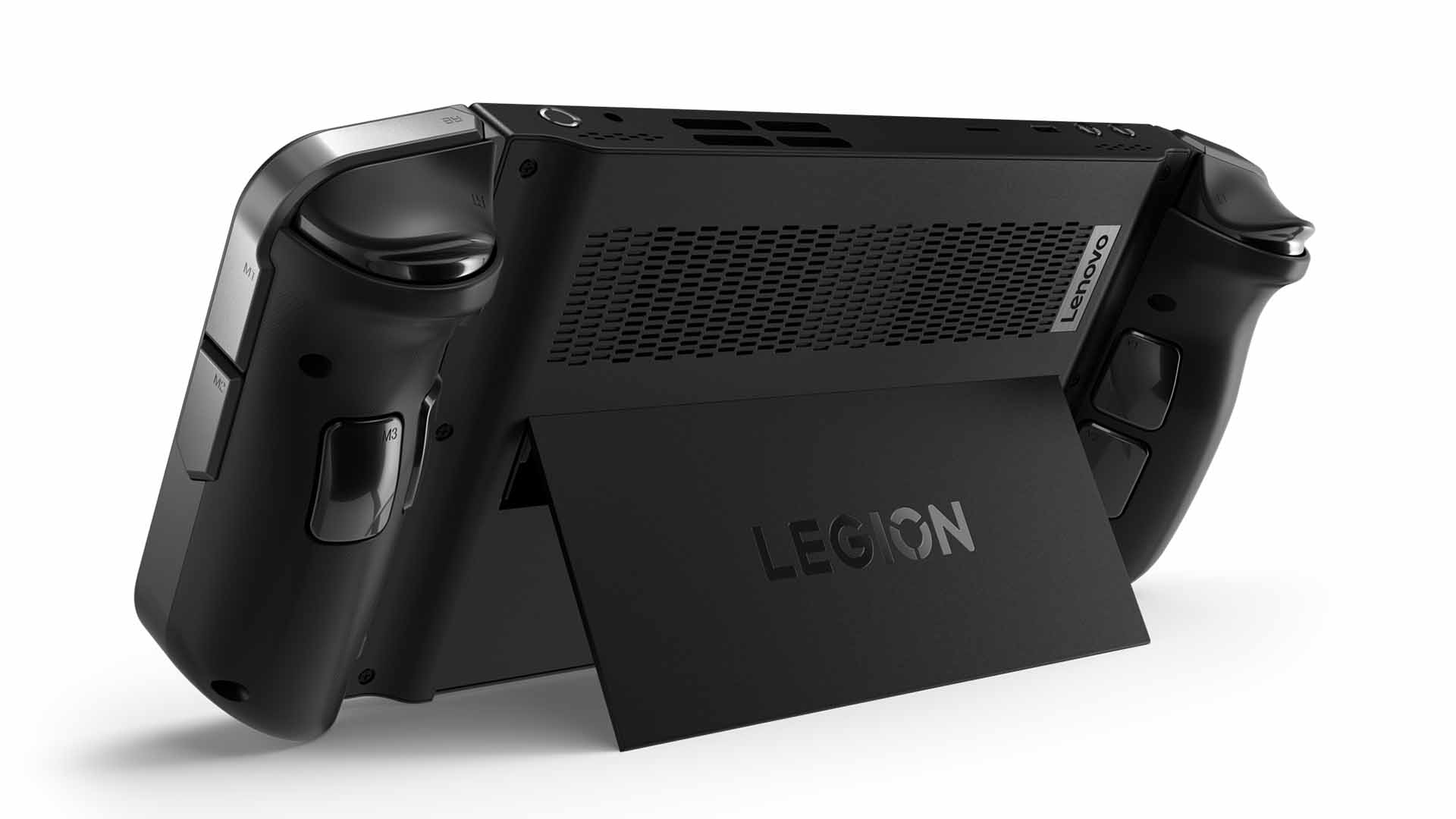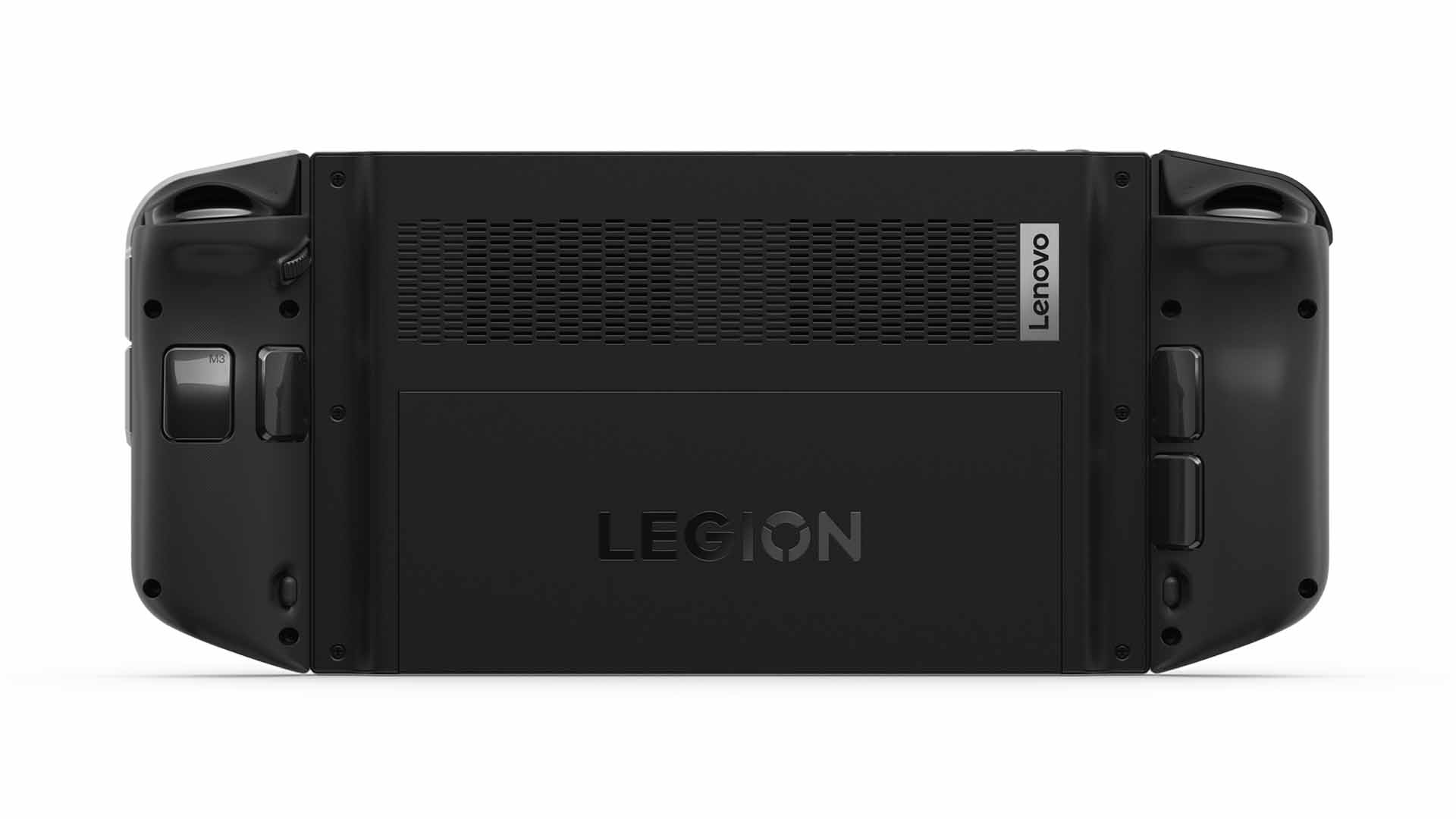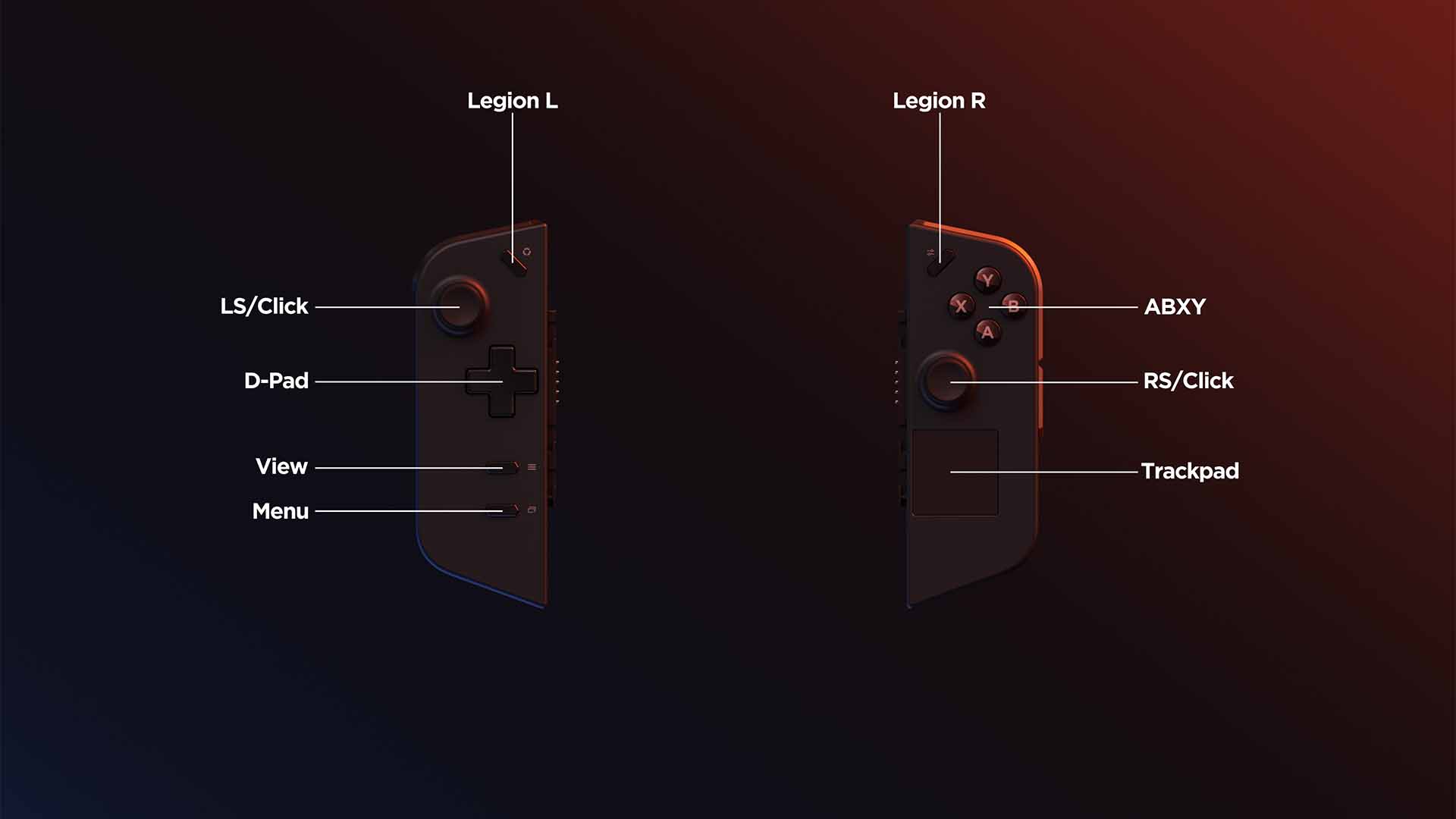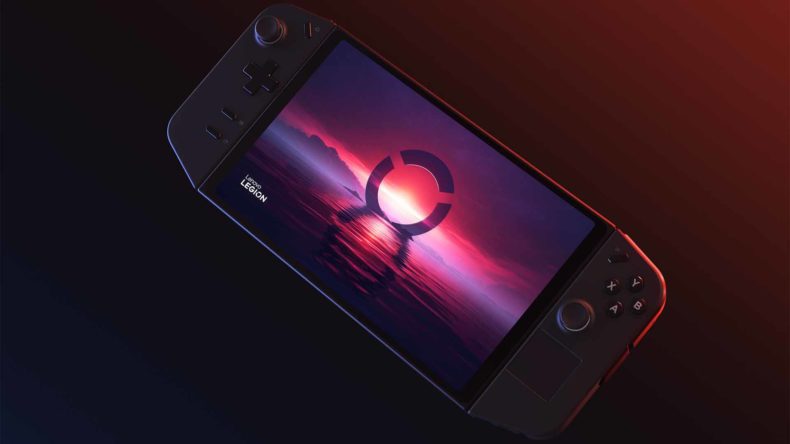The Lenovo Legion Go straddles an interesting part of the portable PC market. Having seen the competition put out products at varying prices and with all sorts of specifications, Lenovo seems to have sat there and thought “what if we did all of it?”, and being clear about it, the attempt to be a jack of all trades almost pays off.
Regardless of the model you end up with, you’ll be shelling out near £700 for a Lenovo Legion Go, but for that money you’re getting an 8.8 inch QHD+ display that, frankly, is only rivalled by the Steam Deck OLED model, and even then, the screen size and resolution just about beats it there. This is an astounding screen, with a refresh rate up to 144Hz, 500 nits of brightness, and the ability to switch resolution on the fly, up to a 2560×1600 image, though more on that later. It’s a touch screen, as you’d imagine, and honestly, while it’s not the selling point of the device, it’s genuinely glorious to see in person. Playing colourful games like Dave the Diver or Cookie Cutter, this thing looks stunning.
So right away, that’s a massive bonus. To counter that, however, it’s important to note this is basically a Windows 11 laptop in a portable, handheld format. This will be of no consequence to some people, but what it does mean in practice is that, unlike a device running on a custom operating system, some tinkering will be required. For example, that QHD resolution is absolutely fine when using the Legion Go as a desktop of sorts, but running most games it’s going to mean you’re taking a frame-rate hit. Of course, some people will always lean resolution over performance, but I’m not one of those people.

Add to this, the fans are incredibly efficient, and keep the device cool, but they don’t half kick up a fuss when doing it on higher resolutions, or higher power-draw profiles. You can get less than 25db of audio from them in quiet mode, Lenovo says, and with some low-end titles I did find this to be true. But the second you veer into anything remotely taxing, you’re going to need power, and fans to kick up. You can wear headphones to mitigate this, of course, but you don’t always want to, and headphones don’t drown out any fan-noise for the poor soul you’re sat next to. You won’t be playing for too long, anyway, unless you plug the device in, because like most portable PCs, you’re not getting much more than 90 minutes or so from mid-tier games. Maybe nearer two hours on less taxing titles, of course.
Requiring customisation isn’t a bad thing, if you don’t mind it, and for the most part once I’d settled on a profile running at 1920×1200 (you can drop lower if you want) I found a sweet spot for the majority of games that wouldn’t blast air out too much, and would run at a good clip. That said, a game like Avatar: Frontiers of Pandora ran, but I had to drop every setting down and use lots of power, and truthfully, I still didn’t find it acceptable in terms of frame-rate. Now we’re talking very high end, triple-A games there, and being that it’s using the Ubisoft launcher on PC, it wasn’t so easy to test on other handheld devices. Again, perhaps with more tinkering I could have got it running better, but it might be a case of (as with all these devices) tempering your expectations for what they’re actually capable of, and how much power you can get from such a small form factor device. Because it’s a Windows device, that also means you can install any game, whether it has a launcher is an older game running from an executable file. It can play anything, and that’s a massive plus point.

That said, the Lenovo Legion Go is the largest (and by a country mile the heaviest) of the handheld PCs I’ve come across, and by some distance. The screen is massive compared to pretty much anything else out there, and with detachable “Joy-Con” style controller grips on either side, as well as a kick-stand, it does feel like Lenovo has seen not just the portable PC niche, but also what Nintendo has done with the newer Switch models, and thought it was a good idea. However, the Legion Go’s controllers hide a bit of a secret when detached, as one can be turned into a mouse.
Included with the package is a “Controller Base”, which the right controller slots into, becoming a sort of old fashioned joystick. A switch is on the base of this controller as well, and flipping it, it turns on the IR underneath, meaning you can use the left controller for movement and other things, and the right controller as a mouse, on a hard surface. It’s a clever idea, but I have to say it took some getting used to. Moreover, it’s never going to replace a mouse and keyboard setup, and being a Windows 11 PC, you’re going to be dropped into PC-pools when playing games anyway, so while it’s a cool thing, and a very unique idea, I’m not wholly convinced by it as of now.
As with all of these handheld PCs, there are additional grip buttons, and I feel bad saying it but the Legion Go rather goes overboard, here. There are 6 assignable grip buttons, but none feel as high quality as the rest of the unit, and all of them feel a bit “in the way”. Add to that the mouse switch, and it feels as though there are buttons and switches everywhere there shouldn’t be.

This issue extends to the standard “bloatware” discussion you’re always going to have with a branded portable PC. You see, where the “start” and “select” button should be, Lenovo has popped their own buttons to bring up their own software. One will bring up a side panel where you can quickly change settings like resolution, on-screen FPS usage, and the like, but the other brings up the Legion Space, which is Lenovo’s way of bringing games all together into one software space. It’s not necessary, though, and running on Windows 11 people can just run games as and when they want to.
Worse still, because of these buttons placement, the actual traditional start and select buttons are under the D-Pad, and no amount of play time could get me used to this. Bringing up a map, as so many modern games do, via the “select” or “options” button, only to have it move after forty years of gaming is one of those moments where you want to ask the developer what it was thinking. You expect branded software, but it shouldn’t be prioritising the buttons you will use all the time when playing. The rest of the layout is absolutely fine, however, and the sticks are some of the best I’ve used in quite some time. The trackpad feels fine as well, though as with all handheld PCs that use Windows, there’s no onboarding, so be prepared to find out for yourself how to do some things.
But the Lenovo Go has so much going for it, and with some small hardware changes for future iterations, it could be pushing for “best in class” discussions. It feels harsh to criticise the size of the unit, because of all it brings to the table, but I can’t help but feel some of the ergonomics do suffer from it trying to be all things to all people. The screen is phenomenal, and the idea behind the removable controllers is a welcome one, too. If you haven’t yet grabbed any kind of portable PC, you will find yourself very happy with the Lenovo Legion Go, and frankly, you’d be very hard pushed to find a better value laptop for gaming. There’s room to improve, but for Lenovo’s first go at thing, this is a rip-roaring success, albeit with a few caveats.
Stunning screen
Competitive price for what it is
Hugely customisable
Heavy and large
Controller layout isn’t right
The Lenovo Legion Go is a superb first attempt at a portable PC, though there’s room for improvement still.





